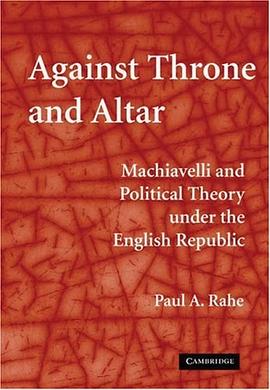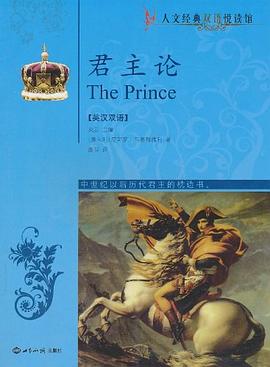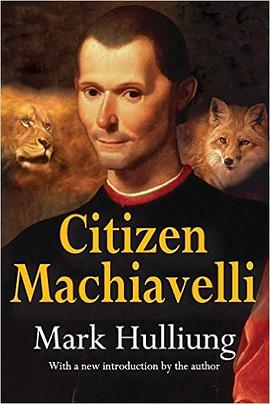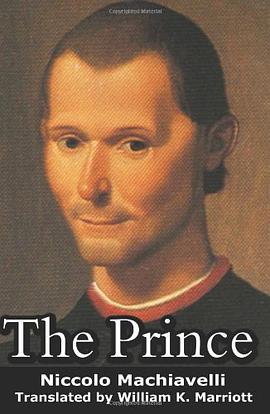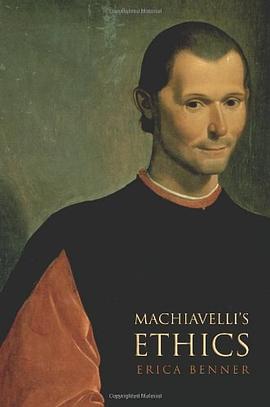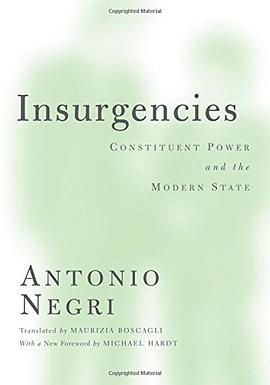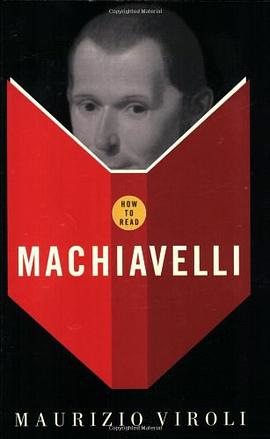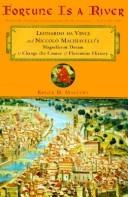

具體描述
CHAPTER ONE A Mysterious Friendship
Leonardo da Vinci and Niccolò Machiavelli probably first met in the town of Imola during 1502. Their paths crossed at the court of Cesare Borgia, where--for different reasons--each was in residence from October through the end of the year. Leonardo had taken a position as Borgia’s military architect and engineer. Niccolò, second chancellor of the government of Florence, was on a diplomatic mission to keep an eye on the unscrupulous Cesare. By June of the next year, both were back in Florence, working together on what turned out to be a magnificent failure.
Few know about the mysterious and ill-fated collaboration between these two famous men. Leonardo da Vinci, creator of the Mona Lisa and the Last Supper, is one of the best-known artists in history. Niccolò Machiavelli, whose The Prince has been blamed for immorality and praised for introducing a science of politics, is one of our best-known political thinkers. In the first years of the sixteenth century, they conceived an ambitious project to direct the Arno River through a canal, at some points twenty miles away from its natural course.
A decade before, Leonardo da Vinci had first developed a plan to make the Arno River navigable, turning Florence into a seaport and irrigating the Arno valley. Niccolò Machiavelli, as an administrator responsible for Florentine military and foreign policy, tried to implement the first phase of this project in 1503-4 in order to divert the river from Pisa, deprive the city of water, and thereby win a war that had frustrated his fellow citizens for a decade. Had the diversion at Pisa succeeded, it was hoped to go ahead with Leonardo’s larger scheme of moving the Arno into a canal through Prato and under Mount Serravalle, transforming the economic basis of Florentine power.
Between 1503 and 1506, Niccolò Machiavelli benefited from Leonardo’s assistance on other projects in addition to this plan to divert the Arno. In June 1503, at Machiavelli’s insistence, Florentine troops besieging Pisa captured a fort called La Verruca; Leonardo was immediately sent as a military architect to propose its reconstruction. In fall of 1504, Machiavelli needed to show Florence’s good intentions to Jacopo IV d’Appiano, lord of Piombino; Leonardo was sent on a mission of technical assistance. Because previous attempts to storm the walls of Pisa had failed, Leonardo worked out a complex scheme for blowing up partial sections of the walls in a way that would reduce loss of life among the attacking forces.
For his part, Leonardo da Vinci benefited from Machiavelli’s position in the government. Lacking income on his return to Florence in 1503, Leonardo received the commission to paint an immense fresco--The Battle of Anghiari--in the Great Council Hall of the Palazzo Vecchio. To help plan the work, Machiavelli’s assistant Agostino Vespucci (cousin of the explorer Amerigo Vespucci) wrote a description of the battle scene, which has been found in Leonardo’s Notebooks. When progress on the painting did not satisfy the political leadership, Machiavelli played a role in negotiating a contract that allowed Leonardo to continue receiving his pay. On other matters as well, including Leonardo’s lawsuit over a disputed inheritance, Machiavelli and his assistant Agostino apparently were of assistance.
Most of the projects on which Leonardo and Machiavelli collaborated were failures. The ditches intended to divert the Arno at Pisa collapsed because of a combination of incompetence and bad luck. The project was abandoned amid recrimination and criticism of its cost, ending any hope of implementing Leonardo’s broader plan to make Florence a seaport. The following year, Leonardo had another disaster with his Council Hall fresco. The preliminary drawing for the Battle of Anghiari was the wonder of all who saw it. But because Leonardo used an experimental technique on the wall, paint ran and dripped, work on it was abandoned, and eventually the partially completed fresco was destroyed.
At the time, these setbacks had very serious implications for both Leonardo and Machiavelli, putting into question their reputation, status, and income. This probably explains why neither wrote of their work together. Who likes to bring attention to a disaster that can be attributed to bad judgment or incompetence? Today, however, the story is worth knowing. We see the human side of these two men of genius by appreciating how and why their collaboration failed.
In the five years after the attempt to move the Arno, Niccolò’s fortunes seemed to recover. He organized a popular militia that played an essential role in the defeat of Pisa in 1509, allowing Florence to regain control of the Arno as far as the Ligurian Sea. Three years later, however, Niccolò’s militia was routed by the Spanish. The republican government he served was overturned and Niccolò himself removed from office. Early in 1513 he was arrested and tortured on suspicion of plotting to kill Giuliano de’ Medici, even though Giuliano and Niccolò had been associated years before and Niccolò actively sought to work for the Medici. After over a decade of public service, Niccolò lost his powerful role in Florentine politics, suffering what he called “a great and continuous malignity of fortune.”
In the years after the Arno diversion failed, Leonardo also confronted frustration and loss of power. Abandoning his work in Florence, he moved to Milan in 1506. When his stepbrothers challenged an inheritance, he returned to pursue the legal case through interminable delays; ultimately, the conflict was settled by his agreement to leave disputed wealth to his stepbrothers on his death. Although Leonardo achieved financial security and status while serving the French in Milan between 1508 and 1512, all this was lost when the French armies were defeated and retired from Italy. Leonardo then entered the patronage of Giuliano de’ Medici and moved to Rome, but life in the entourage of the Medici popes was not congenial. In the last years of his life, from 1516 to 1519, Leonardo finally found relatively secure wealth and status in Amboise at the court of Francis I of France, but by then a stroke had limited his artistic abilities.
The unsuccessful collaboration of Leonardo and Niccolò between 1503 and 1506 was ambitious and foresighted. Yet their attempt to move the Arno has been lost in the mists of history. Because their joint projects failed, little is known of their work together. Both men, often attacked by political enemies, had reason to remain silent about the disastrous Arno diversion. Other factors also conspired to hide their friendship.
Leonardo da Vinci and Niccolò Machiavelli were among the most secretive figures in our intellectual tradition. Between 1498 and 1512, Niccolò learned deception the hard way as a government official and diplomat often involved in delicate negotiations in dangerous places. Late in his life, he said of himself that “for some time now I have never said what I believe nor ever believed what I said; and if indeed I do sometimes tell the truth, I hide it behind so many lies that it is hard to find.”
Leonardo also had his reasons for secrecy. Among his works were many practical inventions he sought to keep to himself and scientific inquiries that contradicted orthodox Christian doctrine. Although we know many details of Leonardo’s life from his Notebooks, the entries are mainly jottings in mirror writing (from right to left) for his private use.
Because letters were often intercepted and read by one’s enemies, a written message often had to protect its author and recipient through indirection, silence, and subterfuge. Niccolò Machiavelli, as a powerful public servant, was frequently at the center of situations that called for diplomacy and discretion. Leonardo da Vinci, serving as artist, engineer, and advisor to rulers and governments, found himself in similar circumstances. During the Renaissance, it could be dangerous to put everything in writing. As Niccolò’s friend Francesco Vettori put it, “I wish I could write many things that I know cannot be entrusted to letters.”
What was true of correspondence at the time was true of behavior more generally. Charges of religious heresy or political disloyalty could be a matter of life and death. Assassination of enemies was not infrequent. In 1478 Giuliano di Piero de’ Medici--brother of Lorenzo the Magnificent--was murdered in a conspiracy led by one of the city’s leading aristocratic families. A generation later, Savonarola, the reformist preacher who effectively ruled Florence for four years, was excommunicated after openly challenging the pope, and then arrested, convicted, and burned at the stake outside the Palazzo Vecchio.
Another factor was a Florentine law that allowed anonymous accusations. At different times in their careers, both Leonardo and Niccolò were subject to such accusations: Leonardo in 1476 on a charge of sodomy (legally punishable by death), Niccolò in 1509, when political enemies claimed he was not legally eligible to serve as second chancellor and should be forced to resign. As Niccolò’s assistant wrote him after the accusation of 1509, “your adversaries are numerous and will stop at nothing. The case is public everywhere, even in the whorehouses.” For both Leonardo and Niccolò, the possibility of such challenges remained a constant threat to status and political influence.
To understand the story of these two men, therefore, we have to look behind the usual textbook accounts. Documents exist that reveal private attitudes and remind us that famous men and women of the Renaissance were human beings with familiar passions and foibles. In the letter from Francesco Vettori quoted above, after lamenting the inability to write everything, Niccolò’s correspondent explains why he has fallen in love. Vettori, serving as the Florentine ambassador to the pope, has little to do:
I wrote you that idleness made me fall in love and I reaffirm this to you, because I have practically nothing to do. I cannot read much, by reason of my eyesight, which has been diminished by age. I cannot go out and enjoy myself unless I am accompanied, and this cannot always be done: I do not have so much authority or such resources as to be sought out; if I spend my time in thought, most of them bring me melancholy, which I try my best to flee; of necessity one must endeavor to think of pleasant things, but I know of nothing that gives more delight to think about and to do than fucking. Every man may philosophize all he wants, but this is the utter truth, which many people understand this way but few will say.
Whatever the historical changes over the last five centuries, the protagonists in our story remain very much our contemporaries.
Leonardo and Niccolò were fascinating, amusing, talented men, sometimes tortured by despair and often surrounded by enemies. Both had ideas ahead of their times--and knew it. Both attracted admiring friends, exercised power--and ultimately failed to succeed in some of their most cherished projects. Both could be charming--or exasperating. And at times, both had unbelievably bad luck.
This is the story of two men and a river. Although the two men are well known, the river, beautiful and rich in history, has a role of its own. Rivers are means of transportation and energy, sources of water for crops as well as people--and when they flood, devastating in their destruction. The Arno was all of these. It also provided the principal reason Leonardo da Vinci and Niccolò Machiavelli worked together. The failure of their grandiose plans--and of the other projects they attempted--teaches a great deal about Leonardo, Niccolò, and an extraordinary moment in Western history.
著者簡介
圖書目錄
讀後感
評分
評分
評分
評分
用戶評價
相關圖書
本站所有內容均為互聯網搜索引擎提供的公開搜索信息,本站不存儲任何數據與內容,任何內容與數據均與本站無關,如有需要請聯繫相關搜索引擎包括但不限於百度,google,bing,sogou 等
© 2025 book.quotespace.org All Rights Reserved. 小美書屋 版权所有









